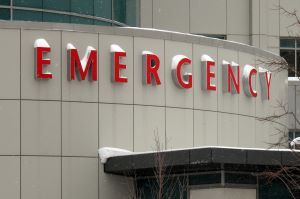
Should your healthcare organization start thinking about cold weather safety?
Emergencies and disasters can happen any time, and anywhere, regardless of whether the sun is shining or if your entire region is frozen over. The warm and cold months pose their own unique challenges for the management of some emergency healthcare settings such as outdoor medical tents and shelters, or temporary surge sites.
However, winters are getting harsher, and weather anomalies like the 2021 Texas power crisis are increasingly spreading to new and unsuspecting areas across the U.S. This means that healthcare facilities and organizations, even those in characteristically warm winter climates, must now consider a plan for keeping staff and patients safe in an emergency under extremely cold temperatures.
Now more than ever, it’s important for healthcare employers to incorporate winter weather preparedness into their emergency management plans. Proactively devising a winter safety plan helps healthcare organizations to ensure the protection of their staff, which in turn improves both patient welfare and treatment outcomes.
Wellhart’s skilled locum tenens providers are well aware of the difficulties that may come with the job for humanitarian aid, disaster relief, and other crisis response work. While our locums undergo a thorough vetting process to make certain that they are the right providers to handle specific needs, Wellhart strives to work with clients in prioritizing safety on the ground of any emergency project.
That’s why we broke down our top tips for prioritizing the protection of your emergency response medical staff from the cold winter elements this cold season.
Plan
The first part of creating a winter safety plan is, well, planning!
The first major step is to outline any possible emergencies that could occur. These may either happen as a direct result of harsh winter weather, or by some other circumstance during the winter which subjects medical staff to work in cold temperatures for long periods of time.
Once you have delineated what could go wrong, consider proactive mitigation strategies for your facility to efficiently diminish the severity of the cold temperatures which your staff could be exposed to. A great place to start is by preparing an emergency stash with the tools and equipment needed to winterize your staffs’ work environment, including insulation, generators, and space heaters.
Bear in mind that, depending on whether circumstances necessitate the use of temporary outdoor sites, your emergency winterization stockpile should include supplies that are able to function within that environment. This may entail thinking ahead to purchase battery-powered heaters and other essential electronics, extra generators, or any other necessary supplies to help staff and patients stay warm with less shelter from the elements.
Educate
To stay ahead of cold-related sickness and injury, it is critical to educate yourself and staff on the dangers of working in cold temperatures. Though healthcare providers probably already know what symptoms to look out for when it comes to cold stress, it doesn’t hurt to present reminders to your practicing medical professionals, and provide a more comprehensive workshop to supporting staff.
Educating both yourself, and your healthcare staff is key to ensure that every employee knows how to identify signs of frostbite, hypothermia, and other cold-related conditions in themselves and co-workers so they can immediately report it.
Another additional safeguard is to form a safety plan for your staff to utilize if they need to immediately seek medical attention during emergencies such as severe winter storms, and provide a complete training for all staff on how to use this system. One example of an emergency safety plan is providing all staff with access to an emergency safety alarm, which can be as simple as downloading an app like theLone Worker Safety app.
Empower
While your staff may know how to recognize the indicators of cold-stress related conditions, they may not always feel that their symptoms are severe enough to be considered an emergency. But even though cold-stress symptoms may start small, if left unchecked, they can lead to serious injury, illness, or even death as the body loses heat.
This is why it is imperative for medical staff to feel empowered enough to use the safeguards put in place for them, whether they experience a slight loss of feeling in their hands and feet, or are exhibiting slurred speech and memory loss.
However, empowering staff to prioritize the safety of themselves and others also means encouraging them to take their own preventative measures to avoid cold-stress emergencies in the first place. While it may be common sense that you should dress warmly to maintain your body temperature in cold conditions, things happen, and people underestimate the power of a strong wind chill.
In cases such as these, you can further empower your staff and prevent emergencies by providing a supply of extra winter clothing like hats, gloves, scarves, and sweaters, or even blankets that can help insulate one’s body heat and keep them warm.
Stressing about filling potential staffing gaps this winter? Wellhart can help! Simply fill out our contact form and get in touch with your new staffing partner!
